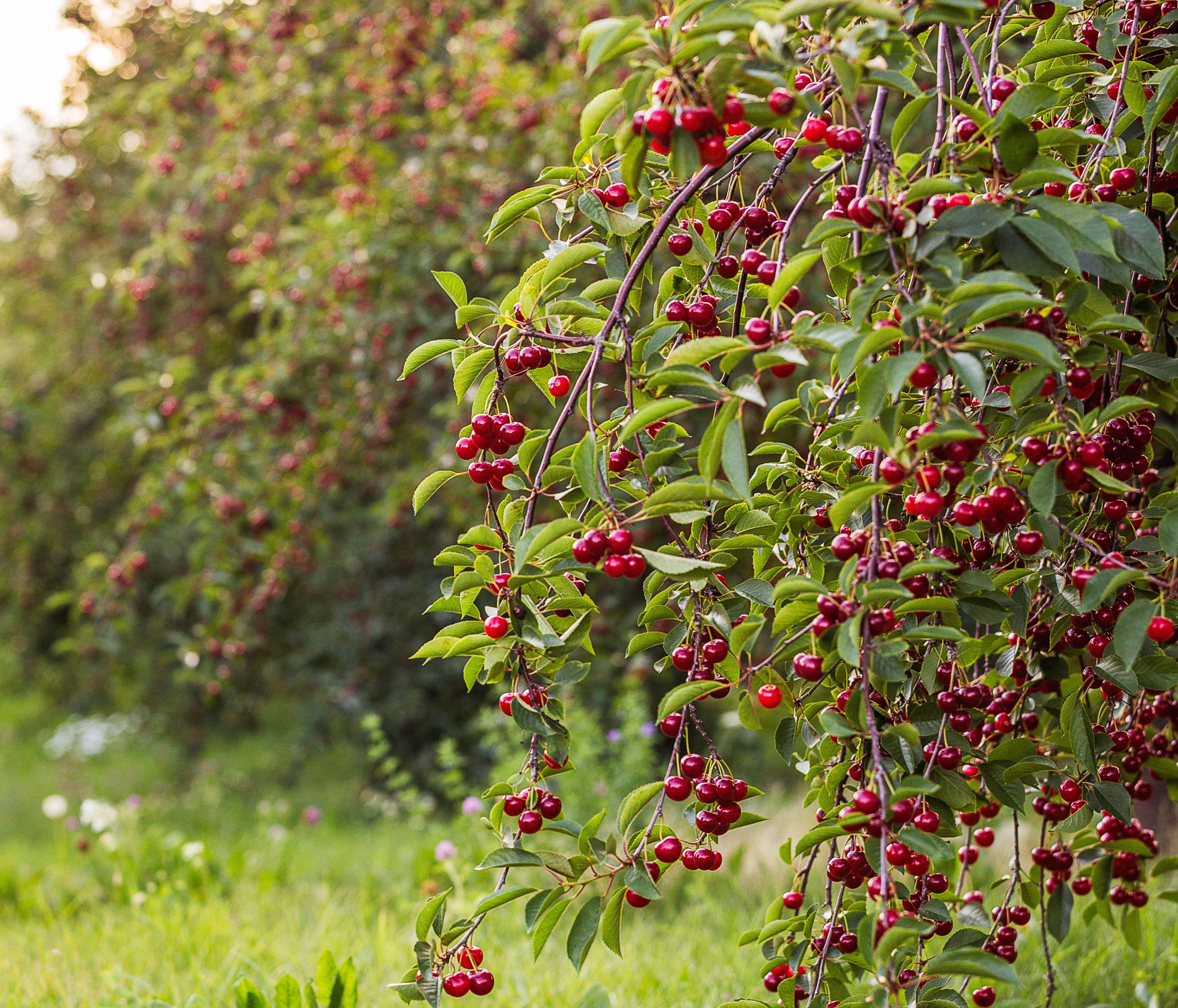Tart or sweet, cherries are a quintessential summer treat. But to get the tastiest harvest from your backyard trees, you’ll need to pick cherries when they are perfectly ripe. Here are some basic guidelines on how to tell when sweet or tart cherries are ready for harvesting, plus tips for picking and storing homegrown cherries so they last as long as possible.
Save your favorite Better Homes & Gardens cherry recipes in one place using MyRecipes. Just click the save icon (with a heart!).
When to Harvest Cherries
Exactly when cherries will be ready for harvesting depends on the types of cherries you’re growing, your local climate, and the weather. Tart cherry trees tend to mature the fastest and usually start fruiting about three to five years after they are planted. Sweet cherries typically take about four to seven years to fruit after planting.
Once they reach maturity, most cherry trees flower in the spring and produce ripe fruit sometime between early June and late July. However, late-season cherry varieties may continue to fruit well into fall. Since there is so much variability in harvesting times for cherries, it’s usually best to use visual and other sensory cues to judge if your cherries are ready to pick.
The sugar content of cherries peaks just as the fruit ripens, and underripe cherries won’t continue to ripen off the tree. To make sure you harvest at the right time, here are some key signs that will let you know that your cherries are ripe and ready:
- Size. Ripe cherries should be large and plump, while undersized cherries likely need more time to mature.
- Color. The mature color of ripe cherries varies depending on the type of cherry tree you’re growing, ranging from almost black to deep red or yellow. The important thing is to allow cherries to grow until they’ve reached their fully matured color and to avoid picking fruit that’s still pale or displaying patches of green.
- Texture. Cherries should be juicy yet firm when fully ripe. If they remain on the tree for too long, they turn mushy.
- Ease of picking. The stems of fully ripe cherries should be easy to pull off the tree. If the stems are still holding firm, you may want to wait a few more days to start harvesting.
- Taste. Taste-testing a few cherries before harvesting is the best way to judge if your cherries are fully ripe. Sweet cherries should be lusciously sweet, while sour cherries should taste a little sweet and sour.
- Birds. Watching for bird activity isn’t always a reliable way to judge if cherries are ready to harvest. Birds will gobble up both underripe and overripe cherries, but they tend to congregate when harvest time draws near.
Related
How to Harvest Cherries
Depending on the size of your tree, either use a stable ladder that is tall enough to safely and comfortably reach the cherries, or use a picking tool such as a fruit picking basket or a grabber with a long pole. To collect the cherries, keep a bowl, bucket, or basket handy.
To harvest, grasp a cherry with your fingers and pull it free from the tree with a gentle, twisting motion. Keep the stem attached to the cherry if possible, which keeps the fruit fresh for longer. Avoid pulling so hard on the cherries that you damage the tree’s fruit spurs; these are short branches, no longer than 2 inches, that produce the fruit. If cherries are difficult to dislodge, leave them in place for a few more days until they are fully ripe and easier to pick.
Once they start fruiting, cherry trees are quite prolific. Cherries typically ripen over one week, and you should harvest every day or two. If rain is in the forecast, try to harvest before it falls, because wet weather can make cherry skins split.
Handle the cherries gently and use multiple harvesting containers to avoid piling the fruit so high that their skins get bruised. In a good year, you should expect to gather about 30 to 50 quarts of cherries from a standard-sized cherry tree, or about 10 to 15 quarts of cherries from dwarf fruit trees.
Especially in hot climates, commercial growers often harvest cherries at night because the quality of the fruit is improved when it is picked in cooler temperatures.
Storing Fresh Cherries
With their stems still attached, cherries should stay fresh in the fridge for about 10 days. Cherries with dislodged stems only last for up to seven days. To help your cherries last, sort through them and remove any underripe, overripe, or damaged fruit. Store the remainder of your harvest in perforated containers in the fridge between 32°F and 40°F. Only wash your cherries just before you eat them.
To preserve cherries for later, dehydrate, freeze, or can them. Small amounts of cherries can be pitted with a paring knife, but if you are freezing or canning large cherry harvests, it makes sense to invest in a cherry pitter.



